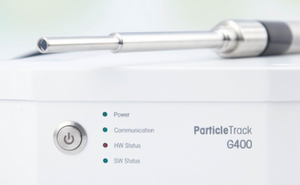Eric Standley is a Senior Research Scientist in Process Chemistry at Gilead Sciences, Inc. in Foster City, California. After obtaining a BS in Chemistry and BA in German Languages and Literature from Boise State University, he moved to the Massachusetts Institute of Technology for doctoral studies in the research group of Prof. Timothy Jamison as an NSF Graduate Research Fellow. The central focus of Eric’s research at MIT was on enabling existing and novel nickel-catalyzed C–C bond-forming transformations through the development of reliable, air-stable nickel precatalysts. Eric then moved to the research laboratories of Prof. Frank Glorius at the Wilhelms-Universität Münster, Germany as an Alexander von Humboldt postdoctoral fellow. In his time in the Glorius group, Eric worked in the area of visible-light photocatalysis and on non-traditional approaches to high-throughput screening to enable reaction discovery and development. At Gilead, he supports chemical process development and manufacture of clinical-stage APIs across a variety of therapeutic areas.
Mapping Solvate Behavior of an API Intermediate
In support of process development toward an API of interest, a robust isolation of intermediate A was sought. Stable form screening revealed multiple solvated and unsolvated polymorphs of this intermediate, of which two, a solvate A • 2 ROH and unsolvated Form I, were further developed to support the isolation process. Subsequently, a two-stage isolation was devised in which the intermediate was first isolated as the solvate and then reslurried in a second solvent to effect desolvation and conversion to the targeted, unsolvated Form I. This process was reliable on laboratory scale, but upon scale-up, an unanticipated reversion to the solvate was observed during the reslurry operation. In-situ Raman spectroscopy was used to rapidly characterize the boundary between A • 2 ROH and unsolvated Form I as a function of solvent composition and temperature, which revealed strong dependence on both parameters. Using this information, the process conditions were optimized, enabling reliable operation to obtain the desired, unsolvated form in subsequent plant campaigns.
Join the hundreds of researchers who already viewed this presentation.



